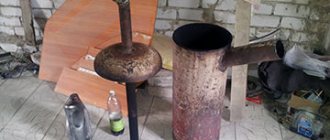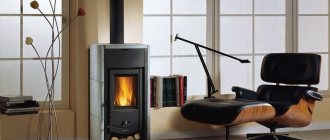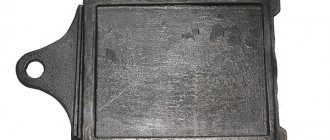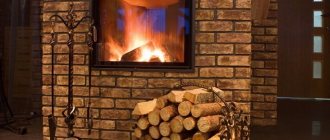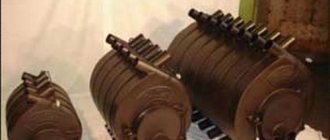We must pay tribute to Professor Butakov - the inventor of gas-generating furnaces, which have gained popularity among the Russian population. They are widely used in everyday life due to their high heating capacity, power, efficiency and functionality. To heat a relatively large room, fuel will be required 2 times less than, for example, when using a stove with brickwork, and also 12 times less than a stove. The design of this stove is not much different from an iron temporary stove, so the unit has found its application in heating summer cottages, garages, large storage rooms, hangars, change houses, mobile booths.
Furnace design
Butakov's heating device is very simple. The unit consists of the following elements:
- ash pan for collecting decomposition products during combustion;
- air outlet pipe;
- two-chamber firebox: one compartment is provided for connecting to gas, the second is for afterburning fuel;
- a grate in the form of a shutter;
- smoke channel.

The pipes run along the edge of both sides of the oven, are arranged in two rows, close and cross at the top of the oven. Thanks to this design, the floor heats up well when cold air moves through the pipes located in the combustion zone. Due to them, the heating area increases and the furnace walls do not burn out. Thanks to special jets with hot air inside, located at the top of the furnace, the secondary gas is burned in full. This once again confirms the efficiency of the device: the fuel burns out entirely, and the heat is retained for a long time inside the room.
History of the Butakov oven
Sergey Efimovich Butakov
The first sample of this design was made in the second half of 2002 in the Novosibirsk region. A few months later, the sample received all the necessary certificates, and at the end of 2004 a patent for an invention was received (patent numbered 2242679). The author of the design is a heating engineer E.Yu. Zubkevich, who named his design in honor of his grandfather's brother, Doctor of Technical Sciences, Professor S.E. Butakov.
A year later, in October 2003, Zubkevich entered into an agreement with, which took over the production and sale of products. However, cooperation was suspended in 2008.
Principle of operation
Functioning the oven is carried out at the same time by pyrolysis and convection:
- Pyrolysis process takes place directly in the firebox. In this case, the fuel does not burn, but simply smolders. By closing or opening the door vent, you can regulate the supply of fresh air inside. During this process, a large amount of gas is released, directed to the second chamber, where, when mixed with oxygen, it is burned in full. At the same time, the air in the room is always fresh.
- Convection process occurs in special pipes installed in the structure. Through ducts mounted in the firebox with protruding ends at the outlet, hot air is directed directly into the room. In this case, heating is carried out in a natural way. The intake of cold air is carried out in the lower openings of the pipes. It passes through the entire structure and is directed upward when hot. However, this leads to sharp temperature changes in the chimney, therefore condensation may form, which is a significant disadvantage of such a design. But the problem can be solved if you install a branch pipe. Through it, the condensate will not be released outside, but will settle directly in the firebox, in which it will simply evaporate under the influence of heat.


Potbelly stoves and many pyrolysis units work in approximately the same way, but there are still some differences. Among them, the following are noted:
- The pipes in the furnace are not installed randomly, but at an angle. It is important to set the exact angle when setting up the structure yourself.
- The doors are not just hinged, they contain a convection chamber, which contributes to faster and more uniform heating of the room.
- The oven, unlike some pyrolysis models, is quite easy to maintain. The ash pan can be easily removed and cleaned quickly. Among such structures, it is the Butakov's unit that is considered the most efficient, simple, with high heat output.
teplomex.ru
The furnaces of Professor Butakov of long burning are used and widely used and reviewed in Russia and abroad. They have a rather nice appearance, have a fairly diverse range of models, good technical characteristics, and, most importantly, are very economical to use.
Stoves Butakov reviews of which are often found on the Internet can be used to heat a private house or summer cottage, garage or small production workshop, as well as greenhouses.
Let's take a closer look at the types of Butakov's furnaces, the main parameters, design features, the principle of operation, the advantages and disadvantages, as well as the installation of the furnace and the installation of the chimney.
Model range of Butakov furnaces
Butakov's stoves are produced by Novosibirsk, which specializes mainly in the development and production of long-burning heating stoves, as well as long-burning boilers and sauna stoves.


Stoves Student: model range
The line of furnaces of Professor Butakov is represented by five modifications, differing from each other in thermal power, area of the heated room and dimensions.
1. High school student (up to 100 m3).
2. Student (up to 150 m3).
3. Engineer (up to 250 m3).
4. Assistant professor (up to 500 m3).
5. Professor (up to 1000 m3).
The smallest stove "Gymnazist" has compact dimensions and is capable of heating a room up to 100 m3. It has only one modification with a chimney outlet upward.
The rest of the models: "Student", "Engineer", "Associate Professor" and "Professor" are produced either with the exit of the flue pipe upward, or behind, on the back side of the stove.
Basic technical characteristics of Butakov furnaces


Technical characteristics of Butakov furnaces
All models, except for the Gymnazist, can be equipped with both a solid steel door for loading fuel into the combustion chamber, and a cast iron door with a heat-resistant sight glass.
Design features of the Butakov furnace
1. Increased furnace heating surface area.
2. The side convection pipes are heated by a flame along their entire length.
3. Ability to use the furnace both in normal mode and in the mode of long-term combustion (gas generation).
4. Unlike the Breneran ovens, there is a possibility of heating food on a flat horizontal surface of the oven.
5. The presence of a grate and a box for collecting ash (except for the “Gymnazist” oven), which is also an advantage over the same “Breneran” or the “Siberia” oven.
6. The absence of a built-in heat exchanger for heating in the furnaces.
The furnace consists of a 3 mm thick steel body. Inside it, special convection pipes are vertically installed. Those on the sides are curved at the top and crisscrossed with each other.
In the front and rear parts of the furnace, there are straight convection pipes with special afterburner nozzles for supplying secondary air to the chamber, located on the upper section of the pipes. This design of the furnace improves the heat exchange process in the furnace, which contributes to obtaining high efficiency.
Let's consider the scheme of the Butakov's stove using the example of the Student wood stove:
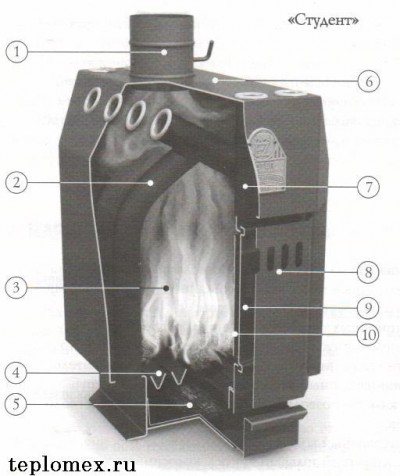

The device of the Butakov furnace
1. Swing gate 2.Bent convection pipes 3. Firebox 4. Grate 5. Ash pan 6. Hob for heating food or water 7. Straight convection pipes 8. Door convector 9. Door (steel or cast iron with glass) 10. Reflective screen
The principle of operation of long-burning furnaces
In the process of burning solid fuel in the furnace, the incandescent gas under the influence of high temperature heats the convection pipes, through which hot air from the furnace enters the heated room. The smoke itself rises inside the chamber and goes out into the atmosphere through the chimney.
At the beginning of work, open the door, distribute the firewood in the firebox, slightly open the ash pan and gate. In order for Butakov's furnace to start operating in a long-burning mode, it is necessary to completely close the ash pan and shut off the gate by 2/3. In this case, not the wood itself will burn in the chamber, but the gas released during its thermal heating.
In this mode, the stove will be able to work up to 10-12 hours, provided that, before starting the furnace, the combustion chamber was filled with fuel as much as possible over the entire volume, the gate was set to the desired position and the chimney height corresponded to the required standards for this type of stove (see the table “Tech. specifications").
What fuel can be used for the Butakov furnace:
- firewood; - wood shavings, sawdust; - peat briquettes; - pellets.
Chimney for the "Termofor" stove: Student, Engineer, Associate Professor and Professor


Installation of Butakov's furnace
When installing a chimney for this type of stove, you must follow the basic rules:
- the minimum height of the chimney should be 5 meters from the grate to the umbrella, for the Associate Professor and Professor stoves 6 and 8 meters, respectively;
- the minimum diameter of the chimney should be 120 mm, and for the Docent and Professor stoves 150 and 200 mm, respectively;
- use special insulated sandwich pipes made of stainless steel with a thickness of at least 0.5 mm;
- be sure to isolate the passage of the chimney through the floors with the help of special boxes filled with expanded clay, or insulated with basalt;
- it is recommended to install a condensate trap to prevent condensate and soot from entering the furnace.
When used correctly Butakov ovens will ensure efficient and uniform heating of your premises, save money on the purchase of fuel and time for its regular filling. This is especially true in our time for a house that does not have an expensive heating system. At the same time, the efficiency of this long burning stove is much higher than that of simple heating stoves or fireplaces. Watching the video.
Advantages and disadvantages
Among the advantages, the following points can be noted:
- Due to its volume, the elongated ash drawer does not require frequent cleaning.
- Convection pipes are located at a certain distance from the floor.
- Acceptable price. The device is notable for its low cost, since it has a simple design and was invented long ago without the use of expensive materials.
- The device is not oversized, but roomy.
- The oven surface can be used for cooking or heating water.
- The construction is robust, which is also facilitated by the material used. The system has a long service life, does not need frequent and careful maintenance. The main thing is to remove ash on time. For this purpose, a special container is installed in Butakov's oven. You do not have to wait for the fuel to burn out, but remove the ash directly during operation.
- The unit is capable of heating a room with an area of up to 1500 sq. meters.
- The stove runs on any fuel: coal, wood, peat, pellets, cardboard remnants, pressed paper, etc.
- The device is environmentally friendly and fireproof.
- It has an attractive appearance.
- Installation is quick, no special skills are required.


Butakov's standard stove: its advantages and disadvantages
The Butakov stove is named after its creator, Professor Butakov, and is manufactured in Novosibirsk.
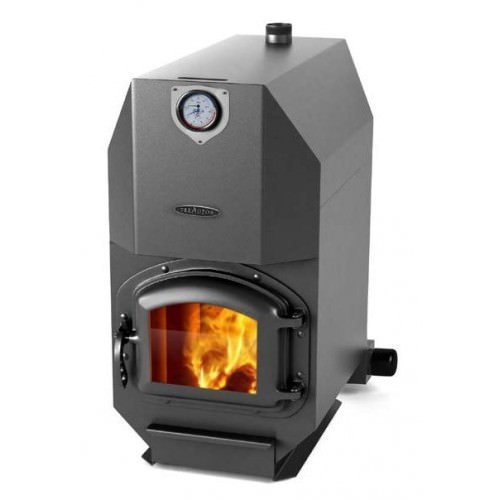

What is the difference between this stove and other heating equipment? Good heat output, low fuel consumption and appearance of the device allows it to win the sympathy of consumers.
Advantages of the oven created by Dr. Sci. Butakov:
- Safety - thick and strong walls will not allow fire to enter the room;
- Lack of unpleasant odor;
- Fast heating;
- Simple installation and assembly;
- The ability to use any fuel for work: firewood, coal, pellets, pressed paper;
- Saving fuel - one mortgage is enough for 10 -12 hours of work;
- The ability to heat a room up to 1500 sq. m;
- Ash removal is easy and simple, thanks to the presence of a special container;
- In addition to heating, the stove can be used to heat food;
- Various models will allow you to choose a stove to your liking;
- Affordable cost.
But, despite all its advantages, there are some disadvantages.
What are the disadvantages of the Butakov oven:
- After burning fuel, the stove quickly loses heat;
- It is inconvenient to clean pipes;
- During operation, the walls of the oven become very hot, which can cause burns to a person leaning against it, or cause a fire.
Having installed such a heating stove, it should be remembered that the pipes will have to be cleaned very often.
The lineup
To date, there are many Butakov oven models on the market. Below we will consider the main ones.
- Device "Gymnaz student" with a power of only 7 kW, it is capable of heating up to 100 m² of area. Chimney height - 5 m.
- Bake "Student" (9 kW) can heat a room up to 150 m². The maximum volume of fuel is up to 20 kg. Chimney height - 5 m.
- Unit "Engineer" Professor Butakov (15 kW) will heat a room with an area of up to 250 m². The maximum volume of fuel is 40 kg. The chimney height is 5 m.
- Bake "Assistant professor" (25 kW) will heat the dwelling up to 500 m². The design holds up to 100 kg of combustible material. Chimney height - 6 m.
- Device "Professor" (40 kW) can heat up to 1000 m² of housing. The maximum volume of fuel is 200 kg. The chimney height is 8 m.
- Unit "Academician" (55 kW) can heat a house up to 1200 m². The furnace can hold up to 240 kg of combustible material.


Each model has its own dimensions. The larger the fuel space and the firebox, the larger the dimensions of the stove.
The optimal choice of the device depends on its purpose, the area of the premises requiring heating.
The compact stove "Gymnazist" can heat up to 100 square meters. meters. Its chimney goes up, therefore this unit is suitable for summer cottages and garage buildings. For other models, the chimney goes up or is located at the back of the structure. They are mainly installed in large rooms.
Furnace "Engineer"


At the beginning of the century, Professor Butakov developed a new model of a heating device. This unit is in demand among the population. The stove is capable of heating a room with an area of up to 2500 m3. As fuel you can use firewood, cardboard, peat and coal... The oven operates at a temperature range -55 - +40 degrees... Small size allows you to install the structure in any convenient place.
"Engineer" is used to heating of residential premises, garages, greenhouses, industrial warehouses, small stations... It should be noted that this model of the furnace has a high price - more 30,000 rubles... You can make such a stove with your own hands.
Furnace design:
- case with two cameras;
- the required number of built-in pipes;
- grate;
- firebox;
- ash pan;
- eyeliner.
It is important to note that the fuel in the apparatus does not burn, but slowly smolders, which allows you to save fuel consumption and increase the degree of heat transfer. The internal temperature should not exceed 350 degrees.The first start-up should take about two hours in combustion mode.
Advantages of the "Engineer" apparatus:
- heats a large room;
- one tab of fuel is enough for 10 hours;
- convective pipes increase the efficiency;
- warms up evenly;
- thanks to the ash pan, the drawer can be emptied at any time.
Cons of the unit:
- excess air enters the furnace through the ash pan;
- to clean do it yourself pipe, you need to disassemble it into sections;
- front panel over time deforms.
Furnace installation process:
- Find a suitable installation site and cover the floor with asbestos and 10mm metal sheet.
- If there are walls nearby, then they also need to be insulated with asbestos cardboard or plaster.
- Place a sheet in front of the machine made of metal.
- Insulate the opening in the ceiling.
- It is recommended to install the stove on a brick base.
- Connect all pipe sections and lead out.
- The chimney must be located on the roof at a height of at least 50 centimeters.
Self-production
Before proceeding with the construction of the device with your own hands, you need to study its diagram:
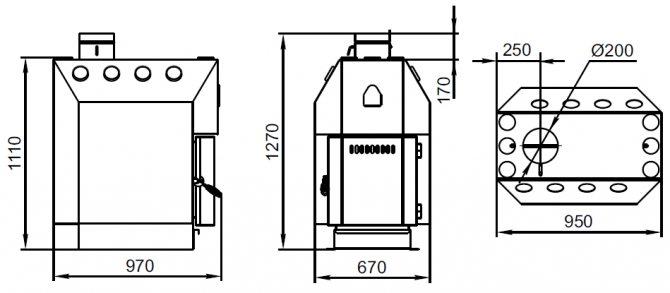

The assembly sequence of this unit is no different from the installation of gas generating furnaces. The basis of the device is a metal barrel.
To obtain a quality unit with safe, economical and efficient heating, follow the instructions below:
- Using a grinder, you need to cut off the top of the barrel, align the sharp edges with a hammer and bend them down.


- It is necessary to cut a circle with a diameter of 1.5-2 cm in the steel sheet. This is much smaller than the corresponding size of the barrel itself.


- In the cut out element, you need to make a hole with a diameter of 10 cm and weld a steel pipe of the same size to it.


- You will need to attach channel sections to the bottom of the product using a welding machine and install them so that they can move freely inside the barrel. During the operation of the unit, the metal beams will press on the fuel.


- A damper is mounted on top of the pipe, and the stud is installed strictly vertically.
- This element must be fixed by welding. A hole must be drilled at the edge of a cut-out steel gate valve with a diameter similar to the corresponding pipe size. After installation, the stud must cover the product.


- The damper is screwed in with a nut. The installation of this element allows you to further monitor the volume of incoming air, as well as the intensity of the device.


- The flange of the lid must be leveled with a hammer. The edges must be folded outward for a snug fit and adherence to the base.
- In the lid you need to make a hole with a diameter of 10.5 cm. To do this, you need to stock up on a chisel.
- The pipe must be welded to the pancake and brought out through the hole made in the lid, which must be welded later.


- For the base of the furnace, you can prepare a not too deep brick platform.
- In the upper part of the device body, it is required to cut a hole with a diameter of 15 cm. A smoke channel, which is 1.5 times longer than the body itself, will pass through it. On top of the structure, a previously measured pipe segment is welded to the hole.
- At the bottom of the device, you need to make a small square hole, then weld the door to it. This will be an ash pan - a hatch for collecting ash, where the box is installed for convenience and ease of cleaning.
- The lower part of the chimney pipe is carefully welded. It is desirable that the product stand on its legs.
- A knee is welded to the channel, the oven is connected. The structure is fixed with a clamp. A fiberglass base is preliminarily placed under this device for the tightness of all joints.

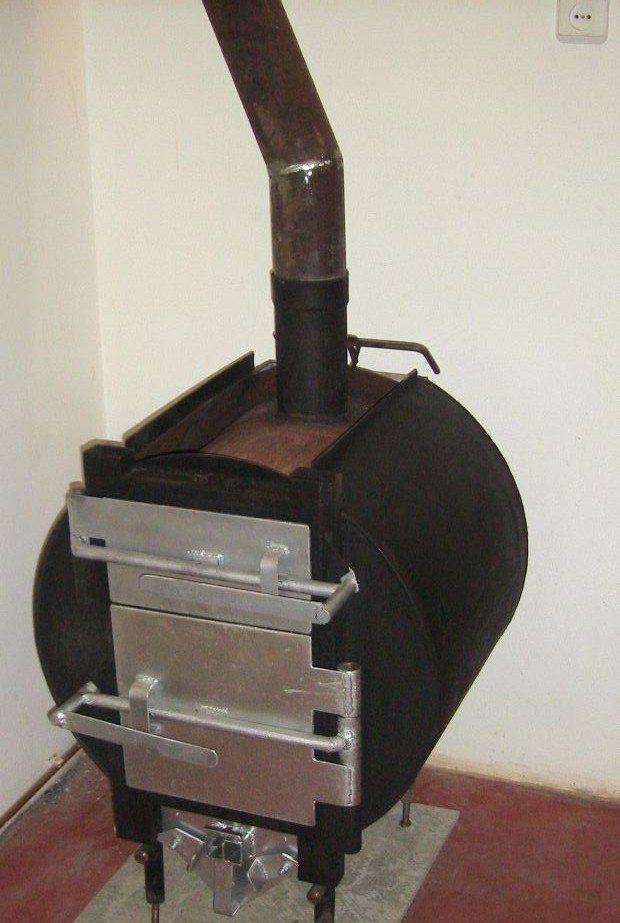
Installation
There are no particular difficulties in installing Professor Butakov's furnace, however, certain rules must be observed, primarily related to fire safety.The main attention should be paid to the chimney, which must be airtight, even and thermally insulated, as well as the location of the boiler and its isolation from combustible materials. In many ways, the installation is similar to that of Buleryan.
So, the installation is carried out in the following sequence:


Particular attention should be paid to fire safety.
A place is being prepared where the heating unit itself will stand; this does not require the installation of a special foundation. The boiler is mounted directly on the floor, on a flat heat-insulating surface (metal sheets on 10 mm asbestos cardboard). In addition, the base of the appliance is equipped with mounting holes, so if desired, the stove can be fixed to the floor.
- The adjacent walls must also be thermally insulated to a level 250 mm above the top of the oven. Thermal insulation can be a 25 mm layer of plaster on a metal mesh, or 10 mm asbestos cardboard with a metal sheet. The oven should be no closer than 380 mm from the wall.
- A metal sheet 700x500 mm should be laid in front of the fire door. Moreover, 700 mm, the side must adjoin the firebox.
- It is necessary to determine the place of passage of the chimney in the ceiling (ceiling), and then make a square hole in it. The hole should be thermally insulated (basalt wool + metal sheets).
- The heating stove of Professor Butakov should be placed in a prepared place, it is advisable to install it on a support made of bricks or any other non-combustible material.
- Connect the chimney to the stove through a tee and lead out through the ceiling.
Important! All joints of the chimney must be "planted" on a heat-resistant sealant.
- Determine the location of the passage in the roof.
- Make a hole in the roof and install the rest of the chimney. The chimney must rise 500 mm above the ridge. Moreover, the part of the chimney located outside the heated room (located in subzero temperatures) must be thermally insulated with a material that can withstand a temperature of + 400 ° C. The ideal option is to install a so-called "sandwich" (heat-insulated pipe).
- Insulate the hole in the roof with basalt wool.
- The space around the stove can be covered with bricks or other non-combustible material.
Furnace installation
The unit can be positioned in the center of the room or built into the wall, simulating a fireplace. In this case, two adjacent rooms will be heated at once.
When installing the oven, the main condition is the unhindered flow of air. The material must be fireproof, and it is better to use a concrete screed for the base. The chimney heats up quickly during operation and start-up of the furnace, therefore it is important to lay a thermal insulation layer between it and the roof.
In the country, you can heat with scraps of firewood, but the best fuel for such a design is high-efficiency pellets. The principle of operation of the stove is as follows: smoldering is slow, so the moisture content of the wood does not really matter. Dry wood will burn in the same way.


The combustion chamber must be extremely tight. Carbon monoxide does not enter the room, so the stove can be placed next to the sleeping place. One bookmark should be enough for 18-20 hours. The Butakov unit will be the optimal solution when installed in a country cottage with a decent area, or in a country house.
More powerful furnaces are being produced today. For example, a new model “Akademik” with a capacity of 55 kW has appeared. This is a real record among heating appliances of this type. Thanks to its modern design, installation is possible anywhere. A wide range of models meets the needs of everyone.
If you follow all the above recommendations, you will be able to make an excellent device with a long-term burning system at no special cost.
Varieties of ovens


Butakov's devices are produced in several models.It is important to note that all furnace options operate according to the same principle, and also have the same design... Models differ in power, dimensions, number of pipes. Therefore, you can easily select the unit for any room. Existing models:
- "High school student". This design is no longer available on an industrial scale, since it is ineffective.
- "Student". The stove can heat a room with with an area of 150 m3... It is an excellent option for living quarters.
- Engineer model. The design is capable heat 250 m3.
- "Associate Professor" is designed for a room with with an area of 500 m3.
- “Professor” will heat 1000 m3.
- "Academician".
On some structures, a hob is installed for cooking.
Unit installation
Butakov's stove for a bath is installed in the center of the steam room or between the steam room and the dressing room (washing department). For a sufficiently powerful installation, the second option looks preferable. In this case, the furnace door is removed from the steam room, which makes it possible to load fuel without going into it.
When installing the oven, the following guidelines should be followed. It is best to install the stove on a specially equipped concrete site. If there is no possibility of its arrangement, then reliable fire-resistant protection must be provided on the floor. For this, a steel sheet with a thickness of at least 4 mm and sheets of asbestos cardboard with a thickness of at least 10 mm are laid.
The stove can be installed at a distance of at least 40 cm from the combustible elements of the bath structure. The adjacent section of the wall of the structure is also insulated with refractory material. Such a screen must be at least 30 cm higher than the height of the device.
A steel sheet with a size of at least 50x60 cm must be laid in front of the door of the combustion chamber. It is installed close to the furnace and must completely exclude accidental ingress of smoldering fuel on the unprotected floor. The chimney must have a total length of at least 5 m. The sections of the pipe passing through the ceiling and roof are subject to additional insulation. All pipe joints are sealed with a special heat-resistant silicone-type sealant.
When operating the furnace, the following nuances must be taken into account:
https://youtube.com/watch?v=UHCC0nw2FRU
- The stove can be heated only with solid fuel (wood, coal, peat, etc.). It is strictly forbidden to use flammable liquids for kindling (gasoline, kerosene).
- The furnace body heats up to a high temperature, and therefore it is necessary to install fences to exclude accidental touching.
- Loading fuel into a self-made installation is as follows. The lid is removed along with the pipe, and firewood is laid, and on top of them small chips are poured and paper is laid. A wick on a long rod can be used to ignite. After the start of combustion, the lid returns to its place, and the metal profile welded to the pipe begins to compact the loaded fuel. While the air duct is flaring up, the air duct valve is completely closed.
- The chimney outlet from the body must be free.
In general, with proper installation and operation, the Butakov furnace is considered an absolutely safe device in terms of fire safety. Such a device is characterized by high efficiency and small dimensions, which provides efficient heating in various types of rooms. If a depressurization of the case and other defects are found, the operation of the device should be stopped until they are eliminated.
Design features
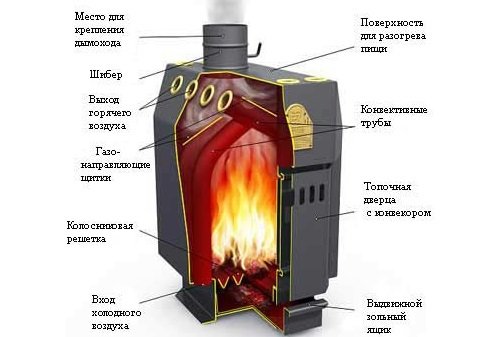

Furnace device Professor Butakov. (Click to enlarge)
This model refers to long burning appliances and consists of the following elements:
- Combustion compartment. It is designed from two chambers - afterburner and gasification.
- Ash part. Fuel residues accumulate here.
- Grate - delivers air to the combustion zone of gases.
- Convection pipes. They also heat up the air. They give a start to the free circulation of air masses.
It's important to know: the "Professor" furnace is adapted only for operation in a state of smoldering fuel. It is strictly not allowed to heat the heat-supplying surfaces of the device to more than 350 ° C.
With the help of a heat sink, it is possible to direct the heated air flow from the convection tubes of the oven to the adjacent rooms. Warm air distribution is carried out using aluminum corrugation. The heat remover is mounted on the side of the heater.
The Buleryan oven is rightfully considered an analogue of our device. You can get acquainted with it in more detail here:
Design features
The design of the Butakov furnace, in terms of the principle of operation and internal elements, is very similar to the Canadian Buleryan furnace. It was this foreign furnace that became a model for creating a domestic model. The main difference between the two heating models is the presence of a grate at the Butakov stove.
The design of “Butakovskiye” furnaces includes:
- ash pan, for collecting waste from the combustion process,
- convective pipes,
- grate,
- labor to evacuate smoke,
- two-chamber fuel compartment. Gas can be connected to one chamber, another chamber for solid fuel,
- the body consists of welded sheets of high quality metal.
Some models provide for the location of the hob on the top of the oven.
Design
The design of the Butakov stove provides for the presence of several basic elements.
- Furnace body. It is an all-welded element made of high quality steel.
- Convection pipes. Air ducts allow you to distribute the heat received from the stove throughout all heated rooms. They are placed in the middle of the structure, and at the top they are crossed. The end elements of the air ducts are open.
- Fuel chamber. It is divided into two zones. One is responsible for fuel gasification, and the second is for afterburning. The stove is based on the pyrolysis effect, which provides a more efficient and long-lasting combustion of solid fuel.
- Ash pan. It is necessary for collecting solid fuel combustion products. Moreover, the design allows you to remove it yourself, even if at this moment the stove continues to work.
- The grate. This flap separates the fuel chamber and the ash pan.
- Chimney systems. Engineer Butakov's stove provides for the use of vertical pipes for exhausting smoke. This allows the resulting condensate to drain back into the furnace and evaporate. This feature significantly affects the performance of the furnace, solves the common problem of the negative effects of condensate.
How does the stove work
It is not difficult to assemble Butakov's stove with your own hands, since detailed instructions are attached to the equipment with a clear indication of the sequence of your actions. But if you purchase a heating system in a specialized store, it makes sense to contact their specialists. Most of the firms that sell furnace equipment provide assembly, maintenance and repair services.
But before proceeding with the assembly and generally giving preference to the Butakov oven, it is worth studying the principle of operation of this device.
- The operation of Butakov's stove in many ways resembles the principle of operation of a cyclone furnace;
- There is nothing complicated in the process. Cold air enters the oven from below, heats up to a certain temperature and begins to move upward. For this, convection pipes are provided;
- Through the holes in the pipes, the heated air is inside the heated rooms;
- All Butakov's stoves are solid fuel equipment. At the same time, the firebox is not particularly whimsical to the type of fuel used. This allows the use of coal, firewood, waste from paper production or woodworking;
- Butakov's design differs in that the fuel does not burn completely, but gradually smolders. This became possible due to the limited supply of air to the inside of the chamber;
- Consumer reviews and visual experiences show that one laying of firewood ensures uninterrupted operation of Butakov's stove for 12 hours. Gymnasium or Student models can work autonomously for 8 hours without refueling.
Manufacturing instruction
All work is divided into several main stages:
First, we prepare the base. To do this, we place the corner with a shelf inward and grab the details.
It is important to place the workpieces on a flat surface and check the diagonal. We make holes in the shelves and expose the pipe blank
It should stand in a plane, we grab the pipes. Once again checking their correct location, we scald the joints. After welding, the slag is necessarily knocked off and the quality of the seam is checked. Pores or burns will require a second suture. At the top, the tubes can be tied together for better stability. The bottom is closed with a sheet of metal, which is laid along the edge of the base and scalded. Now we turn to sheathing the structure with sheets. On the base, we install the sidewalls flush along the outer surface and grab them. Then we install the back wall. At the same time, it is important to grab it not only with the base, but also with the sidewalls. We fix the pieces of the corner at a distance of 100 mm from the base and lay the grate. We fix the jibs and insert convection pipes into them. For the convenience of welding, they should protrude slightly beyond the sheets. Jibs stick to the sides and back wall. We put the upper part on 6 end tubes, connect and grab to the jibs and the back wall. Immediately we make 3 potholders to the pipes. We dock the front part, grab it with all the details. We have a closed box. In the front part, we will have an ash drawer and a door for storing firewood. We cut out the windows for them with a grinder. The door can be mounted on homemade or door hinges and fitted with an eccentric lock. For the ash drawer, 2 mm metal can be used. We fix the handle on the front part. Using a grinder, we cut off the kerchiefs at the junction of the jibs with the front and rear. We turn the oven and fix the kerchiefs at the junction of the corners of the base. You can start welding the structure. Note that the joints must be sealed. Having found a burn-through or undercut, these places must be digested. You should not cook the entire structure, immediately passing one of the seams completely and only then move on to the next face. Better to weld randomly. Having boiled a small area on one part, we go to the opposite side and so we cook the entire structure. This welding will cause less deformation. On the upper part, we weld a piece to connect to the chimney. We make a small hole in it from the edge and insert a rod with a diameter of 8-10 mm. We will make a gate valve from a sheet with a thickness of 6-8 mm by cutting a small groove in it. The gate is welded to a bar that is bent at right angles.
After firing up the furnace, closing the gate, we deplete the air in the furnace with oxygen. In this case, the wood will burn longer, providing only 2-3 bookmarks per day. You can completely close the damper, the groove will allow enough air to flow into the firebox for smoldering.
Professor Butakov's do-it-yourself oven is ready. It remains to clean the joints and scale with a grinder with a cleaning stone. In hard-to-reach places, the scale can be removed with a chisel or file. It is recommended to attach an asbestos rope to the door and ash pan cover to seal and prevent smoke from entering the room.
If desired, the oven can be painted with a heat resistant primer or paint. Having once again checked the quality of welding and assembly of the furnace, you can proceed to its installation.
Reviews on the furnaces of Professor Butakov
On the Internet, you can read a lot of reviews about Butakov's stoves. The vast majority of them are flattering.
“… The design of Butakov's stoves is incredibly beautiful. For example, the Buleryan stove resembles some kind of monster, and you can't put anything on it.But Butakov is outwardly handsome, and you can warm up food on it, and even connect the heating to it ... "
“… Butakov's stove is good. I am completely satisfied. I have in my dacha a small house (5.5x6.2) in one brick, plus ursa and siding. It is worth turning on the stove in 30-degree frost, as in the house, after 30 minutes, the temperature is set to +27. If you completely heat the stove towards the night, then the red firebrands will lie in the morning ... "
“… I bought Butakov in a brick. As soon as I start heating, the heat is released through the air grilles into the rooms. Then the brick heats up, giving off heat, even at the end of the firebox. I have a two-story house. On the first floor there are two rooms plus a porch. I like the purchased products ... "
This article will tell you how to correctly calculate the power of an electric boiler.
You have a private two-storey house and cannot decide on a heating system? The article at: will help you make the right decision.
Types of installations
Several types of Butakov ovens are used. The principle of their operation, the fundamentals of the design and the fuel used in them are identical, and the differences lie in the size of the elements and the number of pipes, which allows you to change the dimensions and power of the installation, and expand the functionality.
Such device models are distinguished.
- "High school student". It has a power of 5–7 kW and is capable of heating a room with an area of 70–90 m². This is the smallest installation weighing about 54-57 kg with standard dimensions of 37x67x78 cm.
- "Student". The furnace power is 8-9 kW with the ability to heat a room up to 140 m². Unit weight 76–78 kg with typical dimensions similar to the previous model.
- "Engineer". With a capacity of up to 12-15 kW, this unit heats rooms up to 240 m². Weight is 112-115 kg. Dimensions 44x77x90 cm.
- "Assistant professor". The installation has the following parameters: power 20-26 kW, heated area up to 520 m², weight 180-185 kg, size 57x98x115 cm. For this stove, the chimney must have a length of at least 6 m.
- "Professor". This is a fairly large stove designed to heat rooms up to 1000 m². Its power reaches 38–40 kW. Weight 234-240 kg. Dimensions 67x111x125 cm.The chimney will have to be made with a total length of at least 8 m.
- Finally, the largest installation is the Akademik, capable of heating a structure with an area of up to 1300 m², for which a power of up to 56 kW is provided. Up to 200 kg of fuel can be loaded into its furnace. Installation weight exceeds 300 kg.
Any of these models can have several modifications.
| Variants | Specifications |
| Coal furnace. | Coal has an increased heat transfer, and therefore, to prevent excessive overheating of the convection circuit, the tubes in the firebox are covered with a protective casing. |
| Wood burning air installation. | This is a classic version of Butakov's furnace, in which an air stream moves and heats up along the contour. |
| "Hydraulik". | This modification differs in that water is directed along the circuit, and it is connected by pipes to the heating system of the room. In such a design, a thermometer is necessarily installed to control the temperature of the water. |




